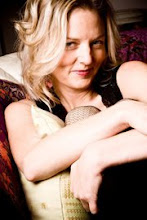By Erica Chan
The Color Association of the United States
“Colors come in a wave and you have to know when to ride it or you’ll end up on the markdown racks.”
The takeaway message from this article is that we should all be aware that colors in general give off a certain “vibe” or statement in defining our moods and attitudes. In a sense, The Color Association decides which colors take off and which colors send your garments straight to the sales racks. Color changes and “comes in a wave” and depending on when we catch up to the color trend, it could make or break the garment itself. We need to watch colors and wait for them to reach their peak, then you try and tweak it as much as you can or you wait for the next shade to come out. When you see those colors, not only do your clothes transition to this color, but so do your other accessories which may include: makeup, shoes, handbags, and more! Be aware that colors DO get old and it’s our job to know when things are popular colors in the world of fashion and society and when they are not (as well as when the change to something else).
In an application to the store, we should always know what colors are selling and what colors are not in comparison to what colors are currently trending. Maybe telling a customer what colors are “in” and applying that to what colors of that palette look best on them and in addition to that, possibly suggesting other accessories that go well with that new “citrus green” top.

